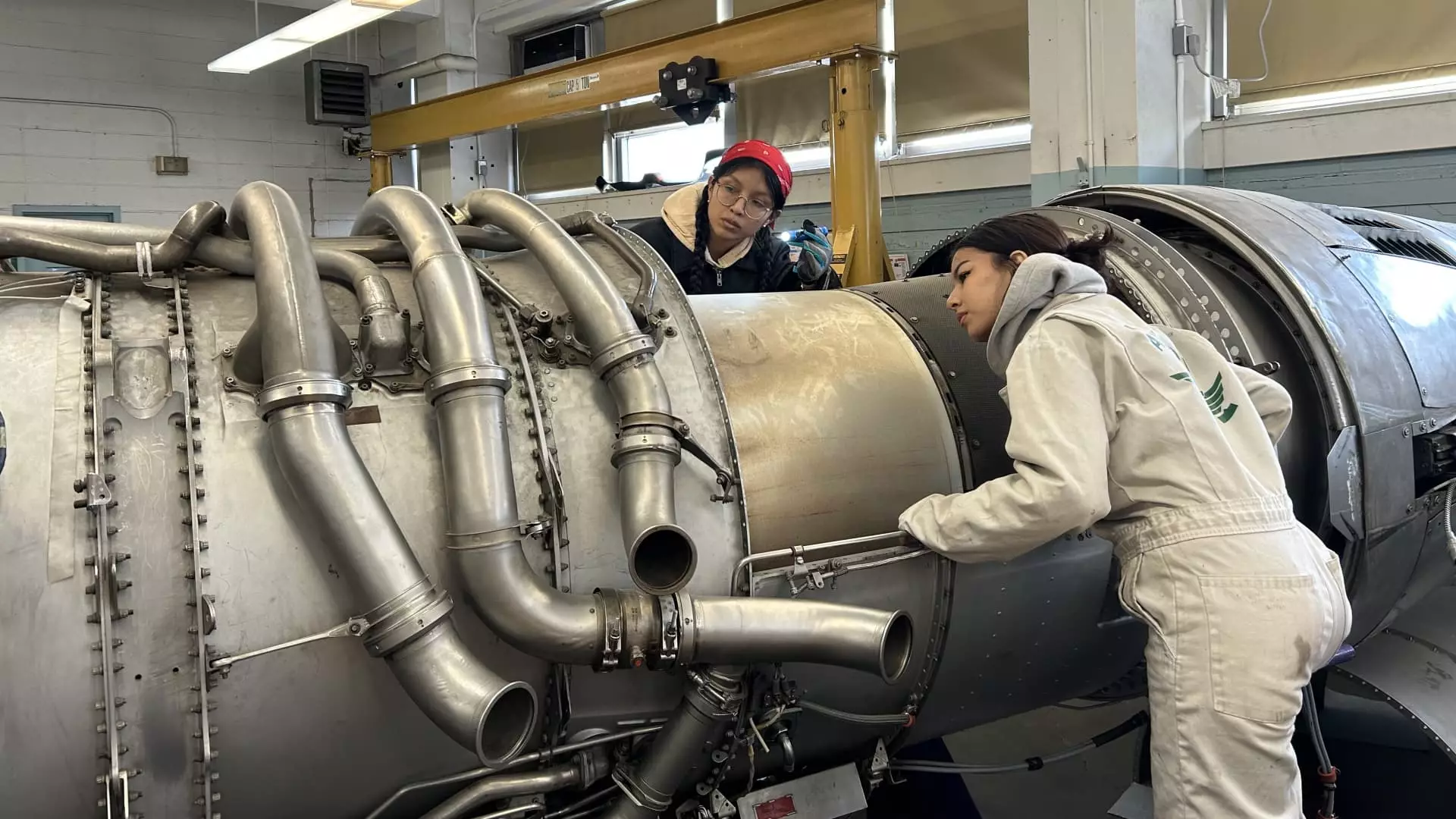In the shadow of ambitious proclamations by political leaders about revitalizing American manufacturing, the harsh reality of the aviation industry reveals a disconcerting narrative. President Donald Trump championed the notion of bolstering domestic employment, yet the aviation sector is grappling with a cataclysmic drop in its skilled workforce. As per a recent alarming report by the Aviation Technician Education Council coupled with Oliver Wyman, the domain is facing a potential shortfall of 25,000 aircraft technicians by 2028. The sobering fact is that the average age of certified aircraft mechanics in the U.S. is a staggering 54—40% are aged over 60. The implications of this aging workforce extend far beyond mere nostalgia; they pose a genuine threat to our nation’s aviation safety and economic stability.
The proverbial wisdom is that talent is ageless, yet the aging mechanics of the sky are not only reaching retirement but also leaving a considerable void behind. Veteran airline executives like American Airlines’ Chief Operating Officer David Seymour have recognized the impending crisis, revealing that many mechanics who once joined the industry during the flourishing ’80s and ’90s are nearing their exit. When they retire, we aren’t just losing a demographic; we’re witnessing a potential collapse of technical prowess that sustains our aviation infrastructure.
COVID-19: A Killer of Careers
The pandemic exacerbated this already troubling scenario. While the aviation sector was rapidly accelerating towards growth, the seismic shock of COVID-19 ground air travel to a halt, causing numerous airlines to shed their experienced workforce through buyouts. The industry’s erstwhile momentum was hindered unceremoniously, throwing a wrench in the plans to welcome a newer generation into roles that are pivotal yet tagged as “unsexy.” Christian Meisner from GE Aerospace candidly notes that the sector lost invaluable talent overnight—an irretrievable loss that stunts recovery efforts and keeps the industry’s future in murky waters.
Despite the promising financial upswing some companies are experiencing, the multitude of roles still languish unfilled. The grim reality is compounded by a shortage of air traffic controllers, a profession critical for maintaining safety standards. Words from the U.S. administration suggest attempts at wage elevation and hiring spurts, but tangible results are palpably missing. The notion that manufacturing—the bedrock of American economic identity—can flourish without skilled workers is not only naive but dangerously shortsighted.
Geographical Barriers to Mobility
The complexities of the American labor market further muddle the situation. Gordon Hanson, an urban policy professor at Harvard, flags another pressing concern: geographic mobility—or lack thereof. Much of the workforce is resistant to relocation, constraining hiring initiatives that would ideally draw in skilled personnel from across the country. This local-centric approach limits labor market flexibility and continually narrows the talent pool. While new projects are surfacing, rising wages in aerospace have not uniformly translated into an influx of qualified workers.
Many individuals entering this sector still grapple with financial insecurities, especially when traditional careers appear more lucrative. The crisis has sparked a challenge in attracting young people who are increasingly entangled in societal narratives that prioritize higher education. This cultural fixation on conventional four-year degrees misses the reality—aviation offers a rewarding path that is economically viable and intellectually stimulating.
A New Generation: Shaping the Future of Aviation
The burgeoning interest in aviation education is a glimmer of hope amidst the chaos. Initiatives at schools like Aviation High School in New York are inspiring future mechanics, steeling students like Sam Mucciardi to circumvent the collegiate route to directly penetrate the workforce. These educational programs are not merely about imparting knowledge but are also about redefining the workforce’s approach to careers in aerospace. Schools across the nation are partnering with major airlines to facilitate the technical training of tomorrow’s workforce.
As GE emphasizes, modern manufacturing boasts advanced technologies like laser-guided machines and precision operations, shedding the archaic image of factories filled with noise and grime. The appeal of these careers is shifting as industry leaders like Meisner persist in highlighting contemporary innovations. Progressive strategies may force a cultural pivot where younger generations eye manufacturing not as a relic but as a doorway to the future.
Krystal Godinez, a former apprentice at GE, embodies this transformation, understanding the high stakes involved in maintaining equipment that literally flies above our heads. With rising demands, the optimism portrayed by figures like Seymour indicates that this younger workforce could radically shift perceptions of aviation careers for the better. However, how effectively the industry can attract and retain them remains a question ringing through the hollow halls of the aviation sector. The stakes are high, and the runway for action has visibly shrunk, demanding urgent attention before the crisis escalates into an irrecoverable catastrophe.

Leave a Reply